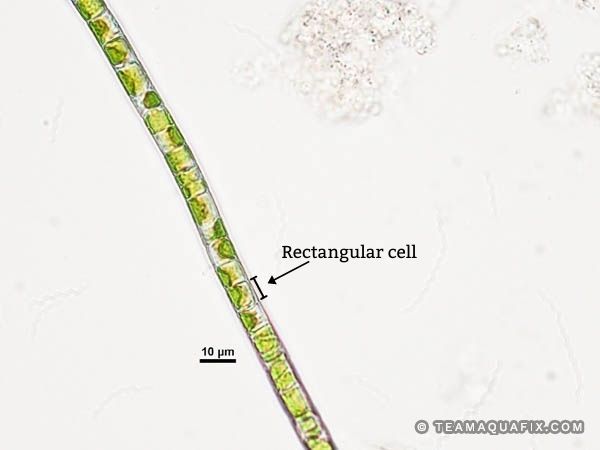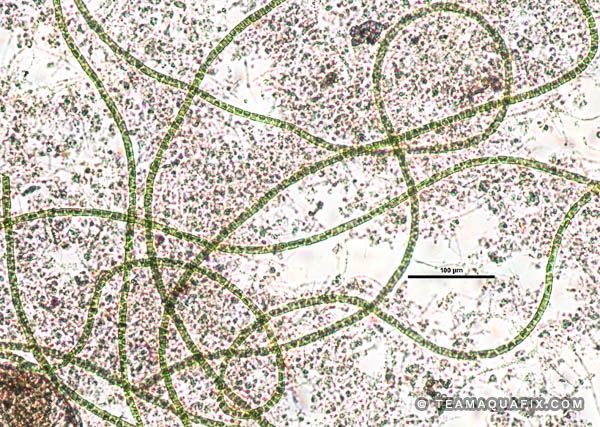Ulothrix
Identification
- Can manifest as green foam
- Free floating
- Banded chloroplast
- Contain a single row of cells
- Cells’ shape ranges from long cylinders to short rectangles
Why Do I Have It?
- Low flow aeration basin
- Low BOD loading
- Excessive light exposure
- High levels of incoming ammonia and phosphorus
Associated Plant Conditions
Ulothrix contributes to a more stable foam, and can also form mats on the surface of an aeration basin.
Treatment
To treat Ulothrix, use a combination treatment of Pondzilla Pro and Argos. Argos is a chelated copper algaecide effective on a spectrum of algae types. PondZilla Pro should be added to the tank mix to enhance uptake of the algaecide into the algal cells. This is important, as Ulothrix is sometimes tolerant of chelated copper. If the scum/foam is stable and accessible, you can sprinkle granules of OxyPaks XL over the surface to collapse it. Aeration basin D.O. should be between 2-3 mg/L to help prevent anaerobic conditions and the release of soluble nitrogen and phosphorus.
Under the Microscope and in Your Plant
Ulothrix is a species of filamentous green algae that can be found free-floating on the surface of aeration basins with low flow and high levels of phosphate and ammonia. In some aeration basins, this filamentous alga may form a green scum or foam. Ulothrix may be more prevalent in systems with a cool water temperature and higher levels of soluble ammonia. The filaments have sheaths as well as a single row of cells that range from long cylinders to short and rectangular in shape. Each cell has a single chloroplast that appears to have a banded structure.



